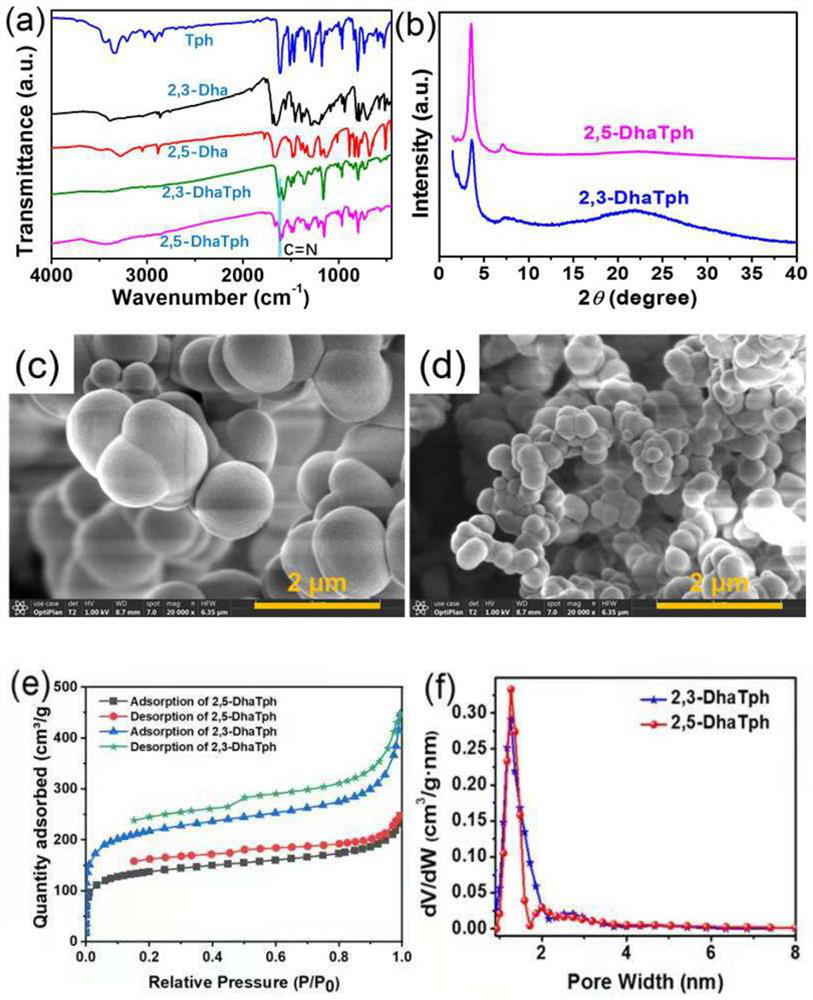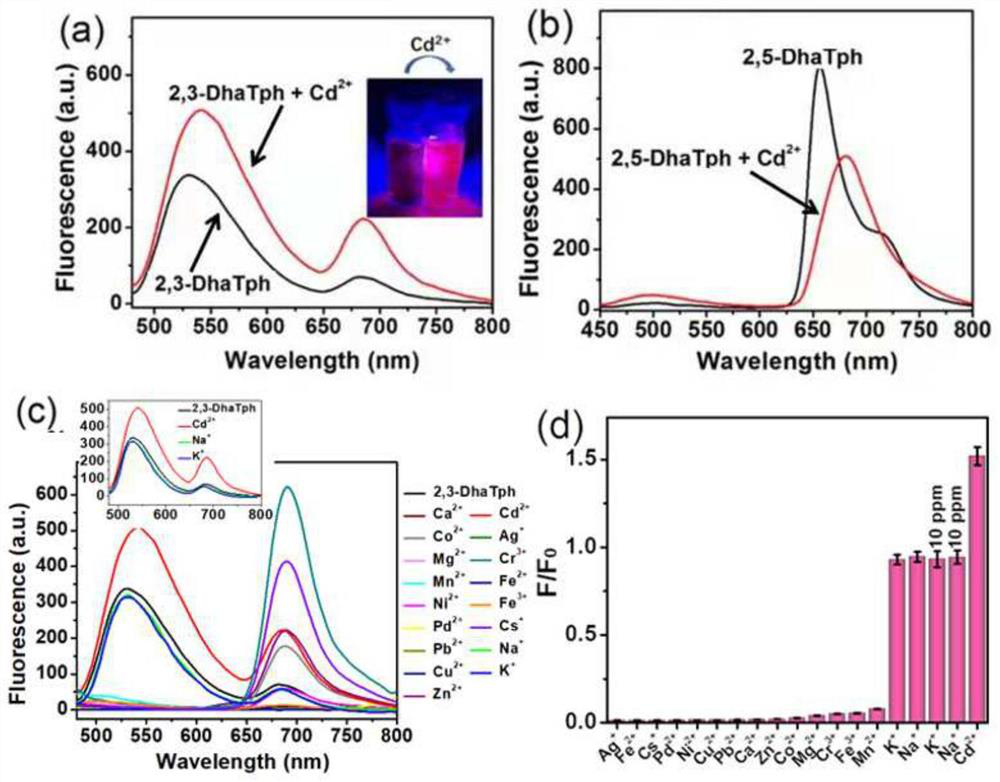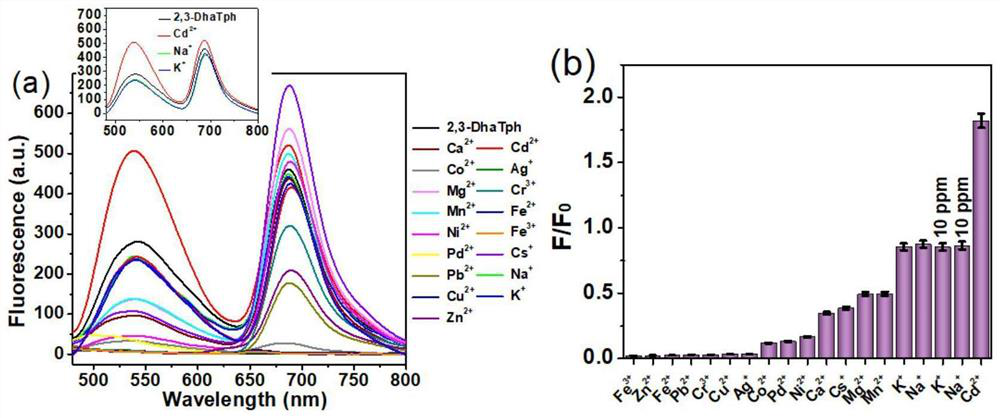Sponge-supported porphyrin covalent organic framework integral material as well as preparation method and application thereof
A covalent organic framework, monolithic material technology, applied in separation methods, material excitation analysis, chemical instruments and methods, etc., can solve the problems of poor Cd2+ affinity, hindering the large-scale practical application of adsorption materials, slow adsorption kinetics, etc. Excellent physical and chemical stability, short adsorption equilibrium time, fast adsorption kinetics
- Summary
- Abstract
- Description
- Claims
- Application Information
AI Technical Summary
Problems solved by technology
Method used
Image
Examples
Embodiment 1
[0041] A method for synthesizing a sponge-supported porphyrin covalent organic framework material, comprising the steps of:
[0042] A polyurethane sponge (50 mg) was immersed in a 0.1 mol / L dopamine solution (Tris-HCl buffer, pH=8.5), and after magnetic stirring for 24 hours, the sponge was taken out and vacuum-dried.
[0043] Starting with meso-tetrakis(4-aminophenyl)porphyrin (Tph) (67.5 mg, 0.1 mmol) and 2,3-dihydroxyterephthalaldehyde (2,3-Dha) (33.2 mg, 0.2 mmol) The starting materials were mixed in a 20 mL reaction vessel with o-dichlorobenzene (6 mL) and n-butanol (6 mL) as solvent and glacial acetic acid solution (6 M, 1 mL) as catalyst. The mixture was sonicated for 5 minutes. The treated dry sponge was added, then the reaction vessel was sealed and heated at 120°C for 3 days. After cooling to room temperature, the precipitate of the crude product was obtained by filtration. The precipitate was washed with tetrahydrofuran in a Soxhlet extractor for 12 hours, washed...
Embodiment 2
[0045] A method for synthesizing a sponge-supported porphyrin covalent organic framework material, comprising the steps of:
[0046] A polyurethane sponge (50 mg) was immersed in a 0.1 mol / L dopamine solution (Tris-HCl buffer, pH=8.5), and after magnetic stirring for 24 hours, the sponge was taken out and vacuum-dried.
[0047] Starting with meso-tetrakis(4-aminophenyl)porphyrin (Tph) (67.5 mg, 0.1 mmol) and 2,5-dihydroxyterephthalaldehyde (2,5-Dha) (33.2 mg, 0.2 mmol) The starting materials were mixed in a 20 mL reaction vessel with o-dichlorobenzene (6 mL) and n-butanol (6 mL) as solvent and glacial acetic acid solution (6 M, 1 mL) as catalyst. The mixture was sonicated for 5 minutes. The treated dry sponge was added, then the reaction vessel was sealed and heated at 120°C for 3 days. After cooling to room temperature, the precipitate of the crude product was obtained by filtration. The precipitate was washed with tetrahydrofuran in a Soxhlet extractor for 12 hours, washed...
Embodiment 3
[0049] The synthetic method of 2,3-DhaTph comprises the following steps:
[0050] Tph (67.5 mg, 0.1 mmol), 2,3-Dha (33.2 mg, 0.2 mmol), o-dichlorobenzene (6 mL), n-butanol (6 mL) and aqueous glacial acetic acid (6 M, 1 mL) in a 20 mL Mix in reaction vessel. The mixture was sonicated for 5 minutes. Then, the reaction vessel was sealed and heated at 120°C for 3 days. After cooling to room temperature, a precipitate of crude product was obtained by filtration. The precipitate was washed in a Soxhlet extractor with tetrahydrofuran for 12 hours, dichloromethane for 12 hours, and then dried at 60°C for 5 hours.
PUM
 Login to View More
Login to View More Abstract
Description
Claims
Application Information
 Login to View More
Login to View More - R&D
- Intellectual Property
- Life Sciences
- Materials
- Tech Scout
- Unparalleled Data Quality
- Higher Quality Content
- 60% Fewer Hallucinations
Browse by: Latest US Patents, China's latest patents, Technical Efficacy Thesaurus, Application Domain, Technology Topic, Popular Technical Reports.
© 2025 PatSnap. All rights reserved.Legal|Privacy policy|Modern Slavery Act Transparency Statement|Sitemap|About US| Contact US: help@patsnap.com



